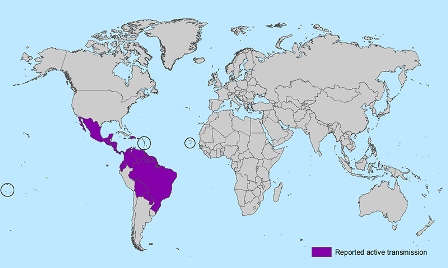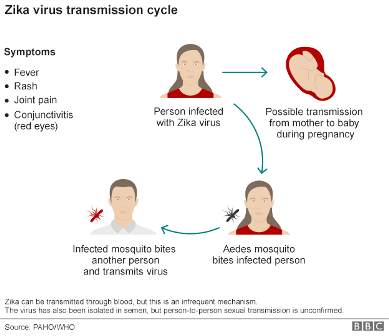The Zika virus – a new epidemic
25 February 2016
This new epidemic has hit the press due to its rate of spread and its striking images of new born babies with birth defects who have been affected by the virus. Women are being advised in affected areas (Central and South America) to delay pregnancy. People are infected by a mosquito but recent reports of transmission by sexual activity (the virus is carried in semen), urine, blood and saliva although these are yet to be confirmed by scientists. What is not as widely reported is that there are high numbers of people contracting the virus but they are surviving. It is not known however, how much those with the virus are contagious and as yet there are no cures only prevention strategies.
What is the Zika virus?
The Zika virus disease is caused by a virus transmitted by Aedes mosquitoes which also transmits dengue, chikungunya and yellow fever. The virus can spread to the foetus and cause microcephaly – a condition involving brain shrinkage which severely limits a child’s intellectual and physical development – or even death.
Birth place of the Zika virus?
Zika virus is an emerging mosquito-borne virus that was first identified in Uganda (in the Zika forest) in 1947 in rhesus monkeys. It was subsequently identified in humans in 1952 in Uganda and the United Republic of Tanzania. Outbreaks of Zika virus disease have been recorded in Africa, the Americas, Asia and the Pacific.
All countries with Active Zika virus transmission


What’s being done?
On the 1st February, 2016 the World Health Organisation (WHO) declared a ‘Public Health Emergency of International Concern’, raised to the level of the Ebola virus and the Center for Disease Control and Prevention’s (CDC) Emergency Operation Centre set up in January moved to the next alert level.
WHO recommendations for prevention and support for countries to control the virus:
- Enhanced surveillance of Zika and potential complications
- Define and prioritise research into the virus by convening experts
- Provide training on clinical management, diagnosis and vector control (mosquitos) as well as supporting laboratories in detecting the virus
- Encourage people to protect themselves with insect repellents, cover up through clothing, use of mosquito nets etc.
- Authorities spraying insecticides
The CDC is working internationally and with local health departments:
- Alert healthcare providers and the public and Zika
- Post travel notices and other travel-related guidance
- Provide state health laboratories and diagnostic tests
- Detect and report cases, which will help prevent further spread
Further geographical questions:
- What factors are causing this virus to spread? Is it related to climate, population movement or lack of knowledge about the virus?
- When does a virus become an epidemic?
- Does a countries level of development / or a specific area’s level of development affect the rate of spread?
- How far do national and international support programmes reduce the risk of the disease spreading?
Resource links:
Latest updates from WHO
Latest updates from CDC
Zika Virus StoryMap
‘Zika Virus: What you need to know’ from the BBC News
‘Zika virus: What to know’ from CNN&
Information on Zika from Al Jazeera